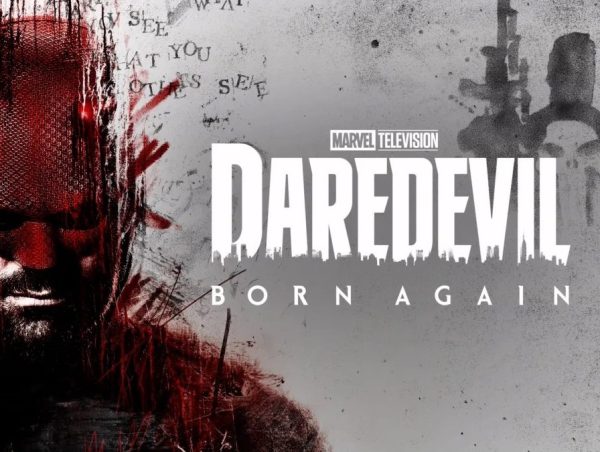MLB: “Baseball Boomers” are Ruining the Sport | Opinion
Photo by John Guccione www.advergroup.com: https://www.pexels.com/photo/100-us-dollar-banknotes-3483098/
Baseball’s popularity is dwindling, and it has been for years. It doesn’t have to be that way, but due to the large-scale negligence and ignorance of baseball personnel and traditionalist fans, it will continue to lose its place on the sports hierarchy.
It has been known as our national pastime, a way for generations of Americans to spend an afternoon at the game and build lasting memories that would define the spirit of our nation for decades.
Ironically, those same people that are baseball’s oldest fans and coaches, known colloquially as “Baseball Boomers”, that grew up watching this game during years in which the game was radically different, are aiding in the slow painful death of our national sport through the refusal to accept useful analytics, and by attempting to keep around antiquated ideals of sportsmanship.
Major League Baseball has existed since February 2, 1876, when what would become to be known as the National League was formed. At that time, pitchers were throwing underhanded without the intention to strike batters out and leather gloves weren’t yet commonplace on the field of play.
A lot of people tried to consider MLB to be the gentleman’s sport, where players were supposed to hold “integrity” and “respect” for one another. Why do I put quotes around those words? Because the people who created that definition in terms of baseball lived in an age long ago. When watching a home run was considered disrespectful and celebrating a strikeout was an act of war upon the opposing team.
As time has progressed since the creation of the first league of professional baseball, several other leagues rose and fell, and only one other league, the American League, was able to join itself with the National League in 1903 to create what we now know as the Major Leagues.
118 years have passed since then, and thousands of examples of legends, stories, and modern-day American folklore have manifested through this game. A color barrier was created, and then broken. A curse of 84 years was also created, then broken.
A consequence of this has been the development of a distinct style of coaching and player development throughout the 20th century, where player value was a very one-dimensional concept and coaches helped enforce rules that would restrict player freedom of expression.
Scouts would look for guys who looked like they hit the ball hard, seemed like they had a good eye at the plate, and threw blazing fastballs that were hard for the naked eye to track.
The issue is, although superstars that can do all those things exist and always will, they aren’t commonplace. Legends of the game like Ted Williams or Hank Aaron don’t come around very often, and when they do, they come at a high price.
So how can you build a winning team without breaking the bank on these superstar players? The answer to this lies in the mind of baseball genius, Bill James. He gave us so many new ways to look at player value, dating back to his first edition of The Bill James Baseball Abstract (first edition printed in 1977) that today we just couldn’t live without.
James pioneered the use of stats that we call Sabermetrics, which he defined as “the search for objective knowledge about baseball”. Ever since the film “Moneyball” (directed by Bennett Miller) had been released in 2011 documenting the 2002 Athletics implementation of these sabermetrics to build a winning ballclub with very little money, these strategies became widely mainstream for every major league organization.
Older, more traditional fans of baseball, tend to scorn the use of these stats, favoring more of the traditional concepts such as judging players from what you can visually see. Typically they also judge players off of stats that were once commonly regarded as important, but now are antiquated.
If you look at the comment section on any type of baseball media, Baseball Boomers make their presence known in comment sections of social media posts, especially when any type of stat like OPS, wRC+, and any number of advanced metrics are shown in those posts. Often, they will ridicule media outlets for making the sport overly complicated with these numbers, instead of just enjoying the game of baseball.
Do they have a point in that regard? Maybe. But these new numbers are informative and supportive to viewers, not detrimental to the experience of watching the game. They assist the viewer in comparing players to one another and finding out the true strengths that teams have over others.
Using these stats as well as new tech that measures things like spin rate and velocity help grow the game, as it expands the scope of how many players can get attention from major league scouts. It’s hard to get through to older fans of the sport because more often than not, they don’t want change to come to our sport.
Well, change is already here. We live in the age of information, where nearly anything can be known at any time by anyone with an internet connection and a smartphone.
Fortunately, most older scouts have since either left the league or been fired in favor of those who support analytics. It is mostly traditional fans that complain about these stats, but those same fans are the market MLB has been pandering to for a long time now. As they move away from supporting those old-school ideals that the game founded itself upon, older fans leave.
According to a survey by Sports Business Journal, Major League Baseball has some of the oldest fans among the major US sports, at an average age of 57.
Because MLB is not effective at getting newer fans, and also upsetting older fans by changing the way the game is played on a day-to-day basis, the last 10 years has seen a dropoff in viewership never before seen.
The 2020 World Series, which was the biggest stage of baseball in a year that people needed something else to look at other than horrible news, MLB mustered the lowest average viewership in the history of its televised championship games, dropping below an average of 10 million viewers per game for the first time in history according to www.boston.com.
To be fair, it did have to contend with a heated national election for TV space, but it is just an example of the dropoff in viewers that MLB has found as the game changes, and older fans stop watching. In fact, according to Forbes, none of the top 10 most viewed world series have happened in this century, with the most recent game on the list occurring in 1991 in game 7 of the Twins vs Braves game.
To attract more young fans, MLB released a commercial during the playoffs of the 2018 season, called “Rewrite the Rules” along with announcing a campaign to “let the kids play,” in an effort to curb the weapons baseball players use to regulate themselves and their behaviors, called the “unwritten rules”.
These unwritten rules follow much of the same thinking that baseball traditionalists do. You watch your home run, you get beaned next inning. You celebrate striking out a guy in a key situation, the next guy who comes up to bat will get beaned (the act of being beaned is when a pitcher intentionally throws a ball at the hitter) as well. These rules often punish players for expressing themselves on the field, which just makes games less exciting to watch.
Watching a player celebrate is more fun than watching a benches-clearing brawl, and it is certainly better for the health of the game. So how does the MLB start off the 2019 season, after the release of the commercial and the campaign?
On April 13th, nearly two weeks after the start of the 2019 season, White Sox shortstop Tim Anderson was intentionally hit by a pitch one at-bat after throwing his bat in celebration of a home run. As well as that instance, in 2021, White Sox Manager and known baseball boomer claimed that his own hitter, rookie designated hitter Yermin Mercedes, was acting unsportsmanlike for hitting a grand slam after his team already had a sizable lead.
A rookie was called unsportsmanlike and disrespectful for adding runs to the team. See why I added quotes to the words “integrity” and “respect”? These words were defined by the same people who defend ages-old rules, created when people of color couldn’t play in the major leagues, so I couldn’t care less of what these people think.
The bottom line is that baseball hasn’t been able to get new fans at the same rate as other major sports due to baseball mindsets that are unwilling to change and adapt the new technologies of our modern world to the game of baseball to help grow the game.
Instead, many minds within the baseball establishment hold onto false concepts of respect and traditionality while ignoring the changing world around them. In that way, I suppose baseball boomers are kind of like the normal type of boomers.
Regardless, major league baseball is a ship being sailed by a blind-deaf-mute captain whose first mate laid him to bed and jumped off the ship himself. But I still love it, and always will.





